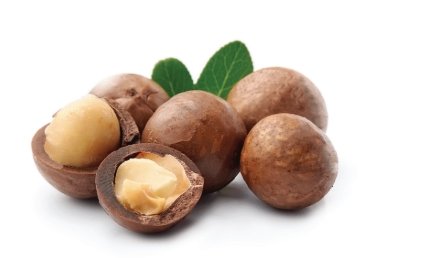A headache is not the problem—it’s merely a symptom of something deeper.
Simply masking the pain with medication may provide temporary relief, but it doesn't address the underlying issue.
The same principle applies in agriculture.
While herbicides, insecticides, and fungicides can eliminate pests, they often do so at the expense of beneficial insects, soil microbes, and essential nutrients.
This creates a vicious cycle leading to the need for more fertilisers and pesticides, costing both time and money.
With fertiliser prices on the rise, this approach becomes increasingly unsustainable. Chris Story, managing director of Kendon Plant Care, an Australian supplier of crop protection and nutrition products for over 70 years, explains the real issue lies in plant health.
"The leaf is the power station of the plant," he says.
"It’s where most of the plant's metabolic processes occur, providing energy for the plant to thrive.
“When the leaf is compromised, the plant becomes unhealthy, making it more susceptible to pests."
Dr. Thomas Dykstra, an entomologist, adds insects don't target healthy plants. They are drawn to those that are weak, nutritionally deficient, or dying. In this sense, pests are not the root cause but a symptom of an unhealthy plant.
So how do you know if your plants are healthy?
Mr Story recommends using a Brix refractometer to test the sap of the plant’s leaves. Brix measures the soluble solid content in the sap, providing an indication of the plant’s overall health.
Here’s a quick breakdown of what Brix levels reveal about your plants:
•1-2 Brix: The plant is in poor health and unlikely to survive.
•3-7 Brix: The plant has a chance to recover.
•6 Brix: The plant is starting to stabilise, with improved colour, flavour, and secondary metabolites.
•8-12 Brix: The plant can defend itself, with better water retention and reduced water use.
•12-20+ Brix: The plant is thriving like an elite athlete – resilient, pest-free, and disease-resistant.
Higher Brix levels not only indicate plant health but also create a healthy growing ecosystem that rewards farmers with richer, more abundant harvests.
So, how can growers efficiently boost Brix levels and plant health while keeping costs low?
The answer is through foliar sprays, particularly those like Kendon High K, a high-potassium liquid fertiliser with chelated trace elements.
Foliar sprays are absorbed directly into the leaf, where they are used immediately – unlike soil-applied fertilisers that can compete with each other for absorption.
This means that nutrients are more efficient and effective, and the risk of nutrient antagonism is reduced.
Kendon High K helps increase the soluble solids in the leaf sap, which plays a crucial role in plant genetic potential, health, and resistance to pests and diseases.
By boosting the soluble solids content, Kendon High K makes plants stronger, healthier, and more resilient to external stresses.
Research from La Trobe University highlights the tangible benefits of using High K to boost soluble solids: when the soluble solids in strawberry leaf sap were higher, marketable yield increased by 29 per cent.
This underscores the clear connection between improved plant health, elevated Brix levels, and greater yields –ultimately benefiting farmers.
Chris stresses to effectively manage pests, it's crucial to address the underlying issue rather than just the symptoms.
By increasing leaf Brix and enhancing soluble solids with products like Kendon High K, farmers can improve plant health, boost yields, and reduce pesticide use – all in a cost-effective, sustainable manner.
Healthy plants lead to thriving ecosystems, which in turn fosters a more profitable farming business, and by creating a thriving ecosystem rewards farmers with rich, abundant harvests.
So how can growers boost plant health efficiently and cost-effectively?
Chris suggests foliar sprays are the most effective solution.
“Foliar sprays quickly raise Brix levels and reduce the need for fertilisers,” he adds.
“Since the nutrients are absorbed directly into the leaf, they are used immediately, without the competition with soil-applied fertilisers.
“Chelated trace elements in foliar sprays prevent nutrient antagonism and enhance leaf chemistry.”
For growers dealing with pests, Chris also recommends Kendon High K, ahigh-potassium liquid fertiliser with chelated trace elements.
It boosts Brix levels, promotes plant health, and helps protect crops against pests and disease – ultimately leading to a more profitable and sustainable farming operation.
By focusing on plant health and boosting leaf Brix, growers can treat the cause of pest problems and cultivate healthy, thriving crops.




